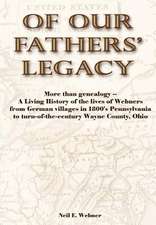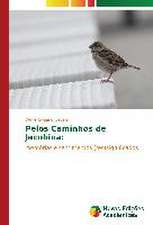Encyclopedia of the Great Plains
Editat de David J. Wisharten Limba Engleză Hardback – 31 aug 2004
The Encyclopedia of the Great Plains is a cooperative project of the Center for Great Plains Studies and the University of Nebraska Press, with the generous support of the National Endowment for the Humanities, the University of Nebraska Foundation, and the Nebraska Humanities Council.
The Great Plains is a vast expanse of grasslands stretching from the Rocky Mountains to the Missouri River and from the Rio Grande to the coniferous forests of Canada--an area more than eighteen hundred miles from north to south and more than five hundred miles from east to west. The Great Plains region includes all or parts of Texas, New Mexico, Oklahoma, Kansas, Colorado, Nebraska, Wyoming, South Dakota, North Dakota, Montana, Alberta, Saskatchewan, and Manitoba.
The region, once labeled “the Great American Desert,” is now more often called the “heartland,” or, sometimes, “the breadbasket of the world.” Its immense distances, flowing grasslands, sparse population, enveloping horizons, and dominating sky convey a sense of expansiveness, even emptiness or loneliness, a reaction to too much space and one's own meager presence in it.
The Plains region is the home of the Dust Bowl, the massacre at Wounded Knee, the North-West Rebellion, the Tulsa race riot, the Lincoln County War, the purported Roswell alien landing, and the Sturgis Motorcycle Rally. From it have emerged furs, cattle, corn, wheat, oil, gas, and coal, as well as jazz, literature, and political reform. It has been inhabited for more than twelve thousand years, since Paleo-Indians hunted mammoth and bison. More recent emigrants came from eastern North America, Europe, Latin America, and Asia, resulting in a complex and distinctive ethnic mosaic.
With 1,316 entries contributed by more than one thousand scholars, this groundbreaking reference work captures what is vital and interesting about the Great Plains--from its temperamental climate to its images and icons, its historical character, its folklore, and its politics. Thoroughly illustrated, annotated, and indexed, this remarkable compendium of information and analysis will prove the definitive and indispensable resource on the Great Plains for many years to come.
Listen to an interview with David J. Wishart from Nebraska Public Radio
The region, once labeled “the Great American Desert,” is now more often called the “heartland,” or, sometimes, “the breadbasket of the world.” Its immense distances, flowing grasslands, sparse population, enveloping horizons, and dominating sky convey a sense of expansiveness, even emptiness or loneliness, a reaction to too much space and one's own meager presence in it.
The Plains region is the home of the Dust Bowl, the massacre at Wounded Knee, the North-West Rebellion, the Tulsa race riot, the Lincoln County War, the purported Roswell alien landing, and the Sturgis Motorcycle Rally. From it have emerged furs, cattle, corn, wheat, oil, gas, and coal, as well as jazz, literature, and political reform. It has been inhabited for more than twelve thousand years, since Paleo-Indians hunted mammoth and bison. More recent emigrants came from eastern North America, Europe, Latin America, and Asia, resulting in a complex and distinctive ethnic mosaic.
With 1,316 entries contributed by more than one thousand scholars, this groundbreaking reference work captures what is vital and interesting about the Great Plains--from its temperamental climate to its images and icons, its historical character, its folklore, and its politics. Thoroughly illustrated, annotated, and indexed, this remarkable compendium of information and analysis will prove the definitive and indispensable resource on the Great Plains for many years to come.
Listen to an interview with David J. Wishart from Nebraska Public Radio
Preț: 461.42 lei
Preț vechi: 501.54 lei
-8% Nou
Puncte Express: 692
Preț estimativ în valută:
88.29€ • 92.42$ • 73.49£
88.29€ • 92.42$ • 73.49£
Carte disponibilă
Livrare economică 10-24 martie
Preluare comenzi: 021 569.72.76
Specificații
ISBN-13: 9780803247871
ISBN-10: 0803247877
Pagini: 940
Ilustrații: 249 illustrations, 15 maps, 8 tables, index
Dimensiuni: 216 x 279 x 15 mm
Greutate: 2.41 kg
Ediția:New.
Editura: Nebraska
Colecția University of Nebraska Press
Locul publicării:United States
ISBN-10: 0803247877
Pagini: 940
Ilustrații: 249 illustrations, 15 maps, 8 tables, index
Dimensiuni: 216 x 279 x 15 mm
Greutate: 2.41 kg
Ediția:New.
Editura: Nebraska
Colecția University of Nebraska Press
Locul publicării:United States
Notă biografică
David J. Wishart is a professor of geography at the University of Nebraska–Lincoln. He is the author of An Unspeakable Sadness: The Dispossession of the Nebraska Indians and The Fur Trade of the American West: A Geographical Synthesis, both published by the University of Nebraska Press.
Recenzii
"[A] unique reference book. . . . This volume is valuable for a wide variety of user groups. . . . It is highly recommended for most libraries in the heartland as well as for all academic and large public libraries."—Booklist
"Especially strong on Native American history and warfare (refreshingly, stressing competition and conflict among the tribes) and on perhaps the Plains' most characteristic features: weather and physical environment."—Benjamin Schwarz, The Atlantic Monthly
“The Great Plains comprises about 30 percent of the land in the United States and has played a critically important role throughout U.S. history. Not until now, however, has there been a single volume that assembles everything of significance related to the region. Historical geographer David J. Wishart and his team succeeded admirably in this effort. . . . Students and scholars seeking a solid introduction to a myriad of issues related to the Great Plains, whether in the United States or in Canada, will welcome this excellent resource. Wishart and his team of contributors deserve a hearty round of applause from scholars and the reading pubic for completing this great work.”—Barton H. Barbour, New Mexico Historical Review
“Wishart, a geographer by training, and the Center for Great Plains Studies at the University of Nebraska are to be congratulated for having ably woven a complex and interdisciplinary fabric. . . . The casual reader and the seasoned researcher each will find items of interest and use in this nicely edited and well-illustrated work.”—Paul R. Picha, North Dakota History


















